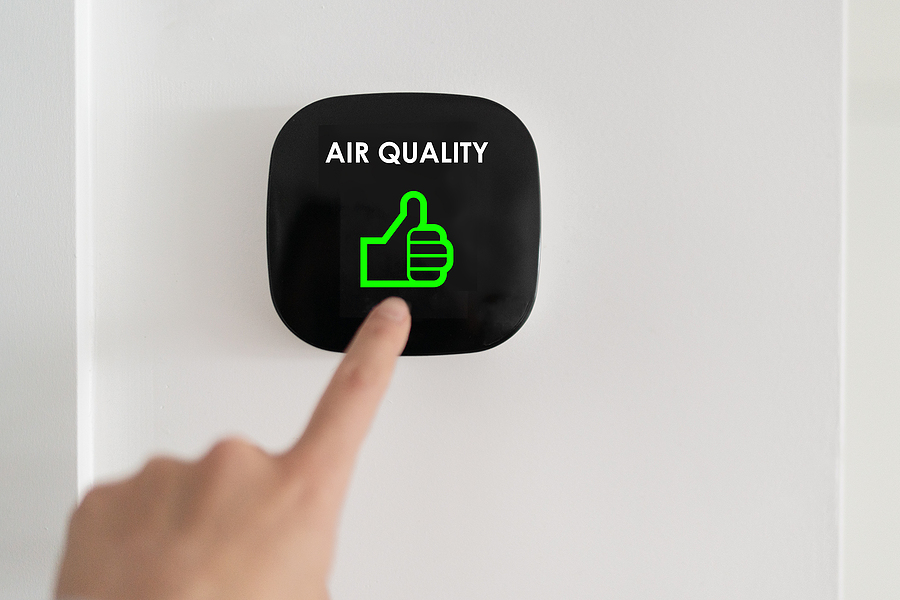The Health Risks of Poor Indoor Air Quality During Winter

The following article is a guest post by Rachel Watson of Precision Air & Plumbing.
During summer, opening windows and doors can help you cool down. However, cold weather calls for central heating and stoking up your stoves. While it paints a cozy image, the change in the season can take a massive toll on indoor air quality (IAQ).
Did you know that winter is considered one of the worst times for indoor air quality? After all, the cold season is when you stay inside tightly sealed homes and trade ventilation for heating. This setup can trap moisture and pollutants in—a recipe for poor indoor air quality.
The Health Risks of Poor IAQ
In addition to preparing your home for winter, maintaining indoor air quality should rank high on your list of priorities. Thanks to research, people are now more aware of the health risks that indoor air pollutants can bring.
The World Health Organization (WHO) estimates that nearly 3% of the global disease burden is caused by poor indoor air quality. The State of Global Air survey also estimates that at least 3.6 billion people are exposed to air pollution in the household.
Your Fireplace and Particulate Matter
While they create a lovely ambiance, wood-burning fireplaces generate smoke, which consists of fine particles and a complex mixture of gases known as particulate matter (PM).
PM is made up of liquids, dirt and dust that become suspended in the air. To minimize smoke and maximize fresh air, burn wood efficiently using dry, seasoned wood and a certified wood stove.
Carbon Dioxide Concerns
With windows kept closed during winter and family members spending more time inside, CO2 levels frequently rise indoors. Higher CO2 levels can cause drowsiness, poor sleep, restlessness and headaches.
When CO2 levels reach 1,000 ppm, scientists found a notable decline in decision-making capabilities. At 1,400 ppm, they also discovered a 50% drop in people’s cognitive ability.
Airborne Chemicals
Volatile organic compounds (VOCs) are emitted from solvents, carpets, furniture, paints and cleaning products. VOCs also contribute to various health problems, including respiratory illnesses and cardiovascular diseases.
In addition, these compounds can irritate the eyes, nose, ears and throat, as well as cause dizziness, headaches and memory impairment. When houses are mostly closed during winter, these pollutants can remain indoors.
Radon Gas
Among non-smokers, radon is considered one of the main causes of lung cancer. Unfortunately, a staggering 60% of Americans surveyed are unsure or not aware of the presence of radon gas in their homes.
Making a home more airtight also risks radon buildup. This odorless and colorless radioactive gas is produced when uranium breaks down in the rock, water or soil under your feet.
Radon gas can also enter homes through foundation cracks. While good ventilation can lower the risk of radon exposure, it becomes more difficult during winter months.
Ways to Improve Indoor Air Quality
Below are some of the best ways to dramatically improve the indoor air quality of your home.
Change your HVAC filters
Heating, ventilation and air conditioning (HVAC) systems work to create the perfect temperature all year round. In addition to cycling air, they also filter common pollutants. Ultimately, the air filters can clog and stop working efficiently.
Dirty filters not only negatively impact your indoor air quality, but they can also wear down your HVAC system. That said, make sure you change your air filters regularly. You can also consider getting service plan for your HVAC system, which normally includes regular filter changes.
Reduce radon levels
Since radon is invisible and odorless, detection requires special equipment. To test your home, contact your state radon office for information on qualified radon testers or test kits.
Information and test kits are also available from a radon hotline. If levels are high, choose a qualified radon mitigation contractor to fix your home. You can contact private radon proficiency programs and ask for a list of certified radon specialists near you.
Other techniques to reduce radon at home include room/house pressurization, natural ventilation, sealing, and heat recovery ventilation.
Check your air ducts
Air ducts distribute hot and cold air throughout the home to provide a comfortable climate. However, if ducts are not properly installed or maintained, contaminants can be easily distributed from one part of the house to another.
Over time, pet dander, dust and even mold can accumulate in ducts and reduce indoor air quality. Consider hiring a professional to ensure your air ducts consistently circulate clean, fresh air.
Use cooking vents
Many indoor air pollutants originate from the kitchen. For instance, gas stoves can release harmful contaminants like nitrogen dioxide and carbon monoxide.
Some electric burners can also release low levels of pollutants, some of which can be easily absorbed into the bloodstream. When cooking, either open a window to increase ventilation or turn on cooking vents.
Final Thoughts
Cranking the heat and closing the doors and windows during winter can result in a buildup of harmful pollutants. Fortunately, you can improve IAQ through filters, healthier product choices and better ventilation.
About the Author
Rachel Watson is the Senior Content Editor of New AC Unit, a full-service HVAC contractor in Chandler, Ariz. She writes about how to stay fit and make home living more energy-efficient and environmentally friendly.

